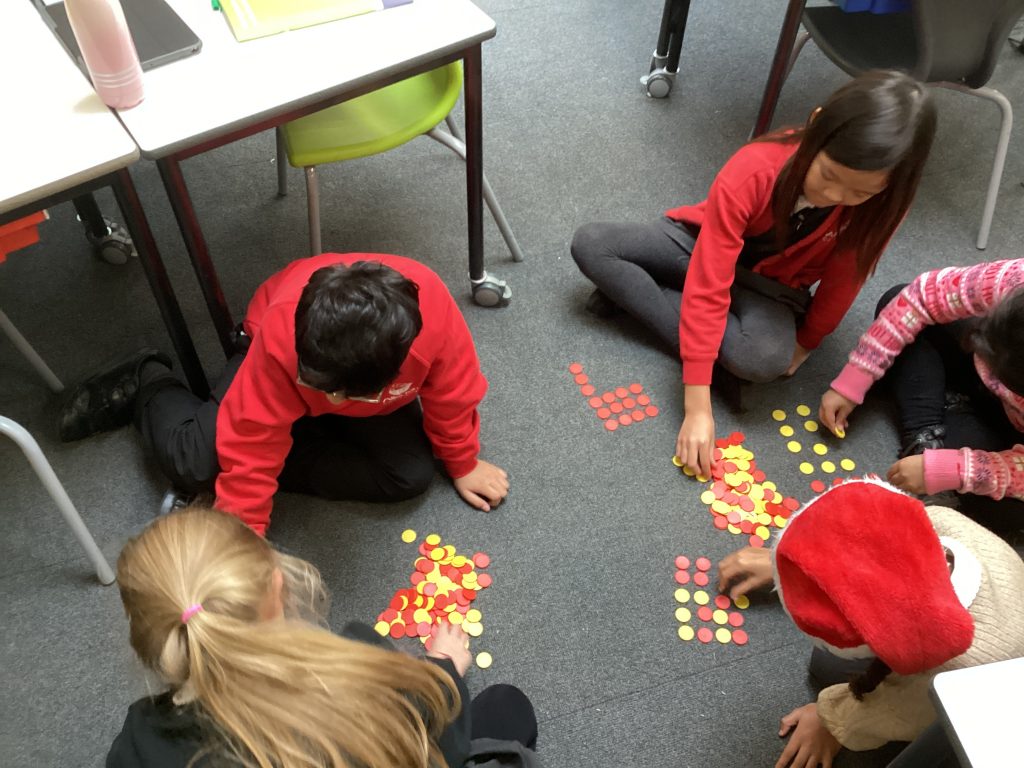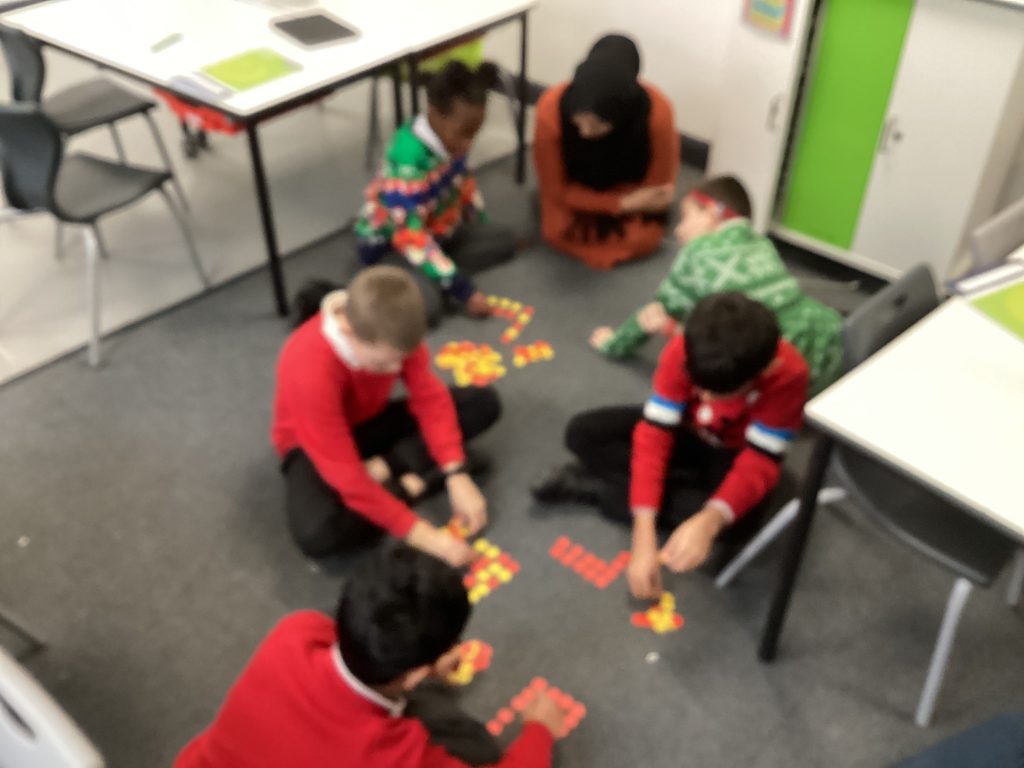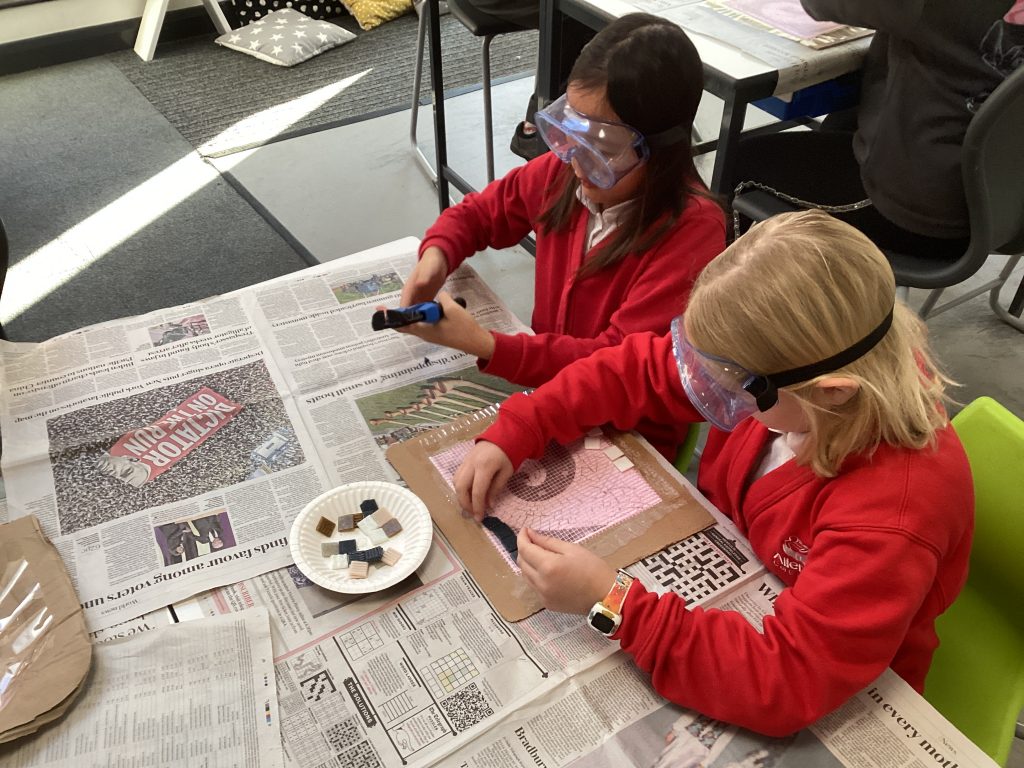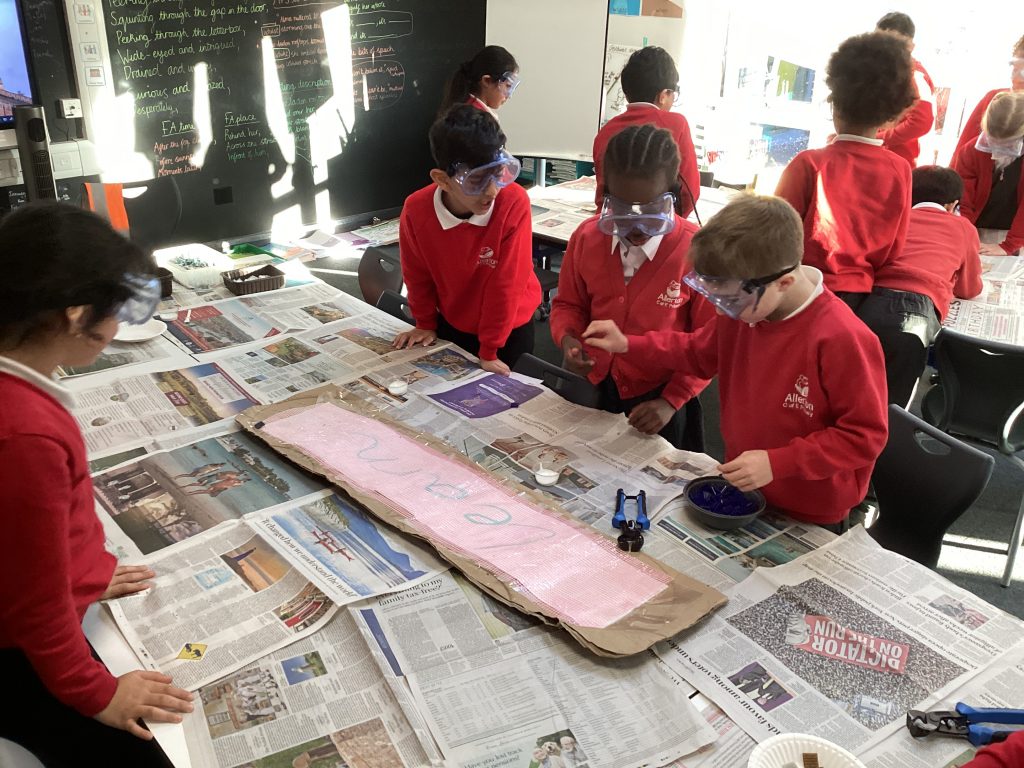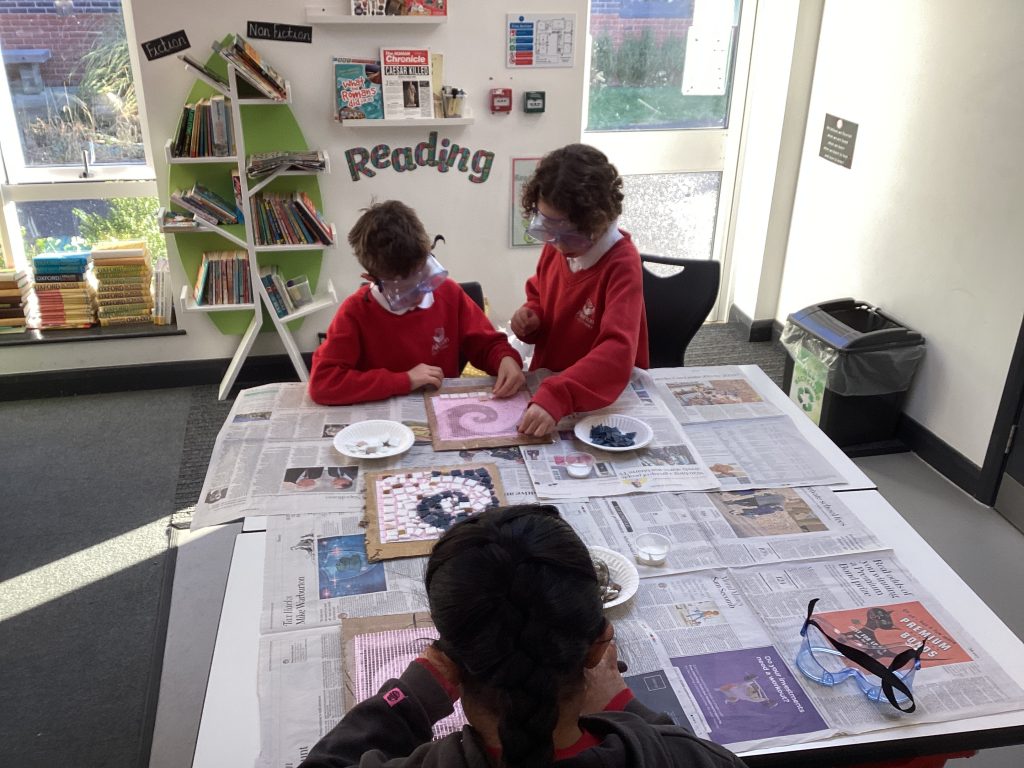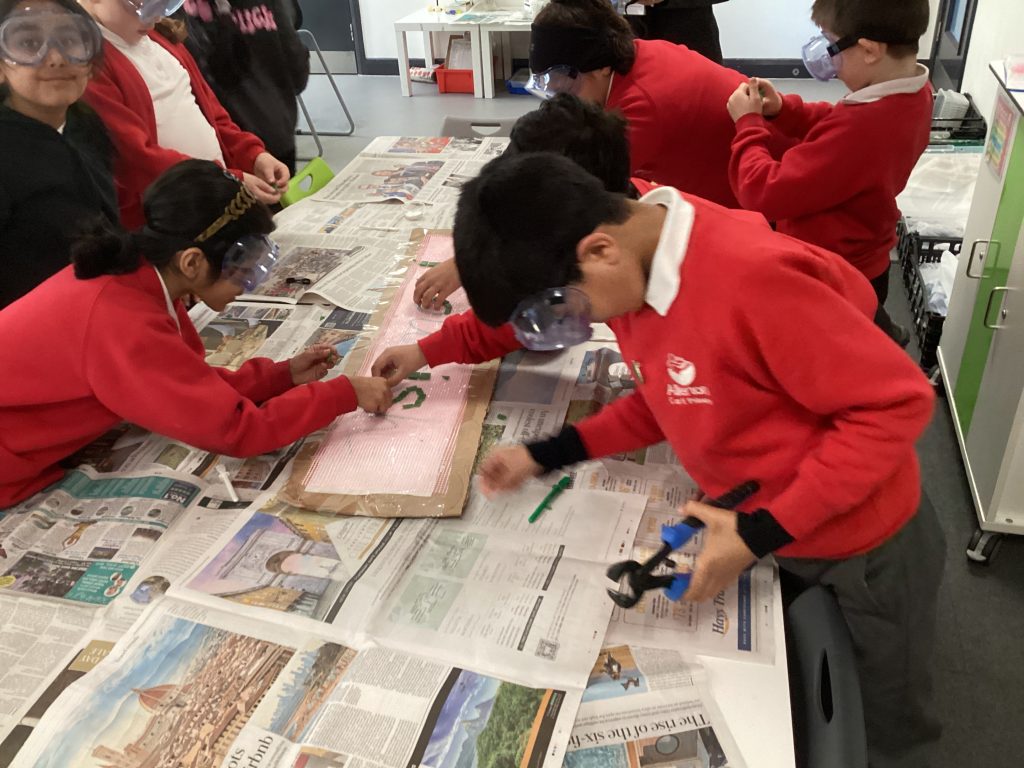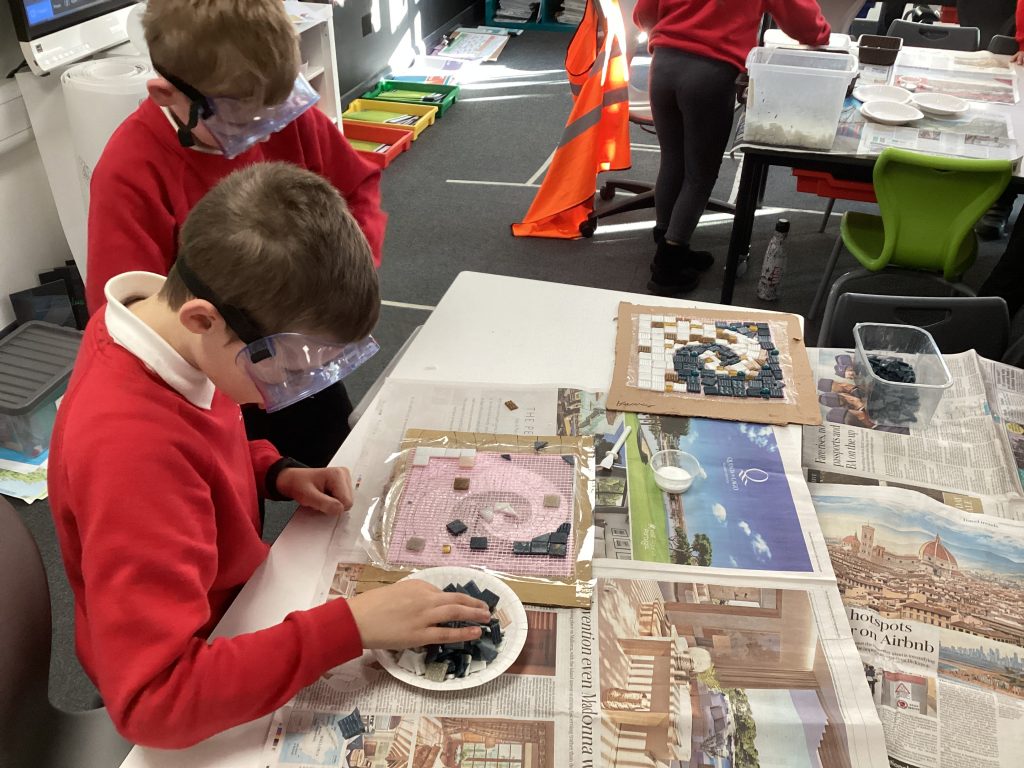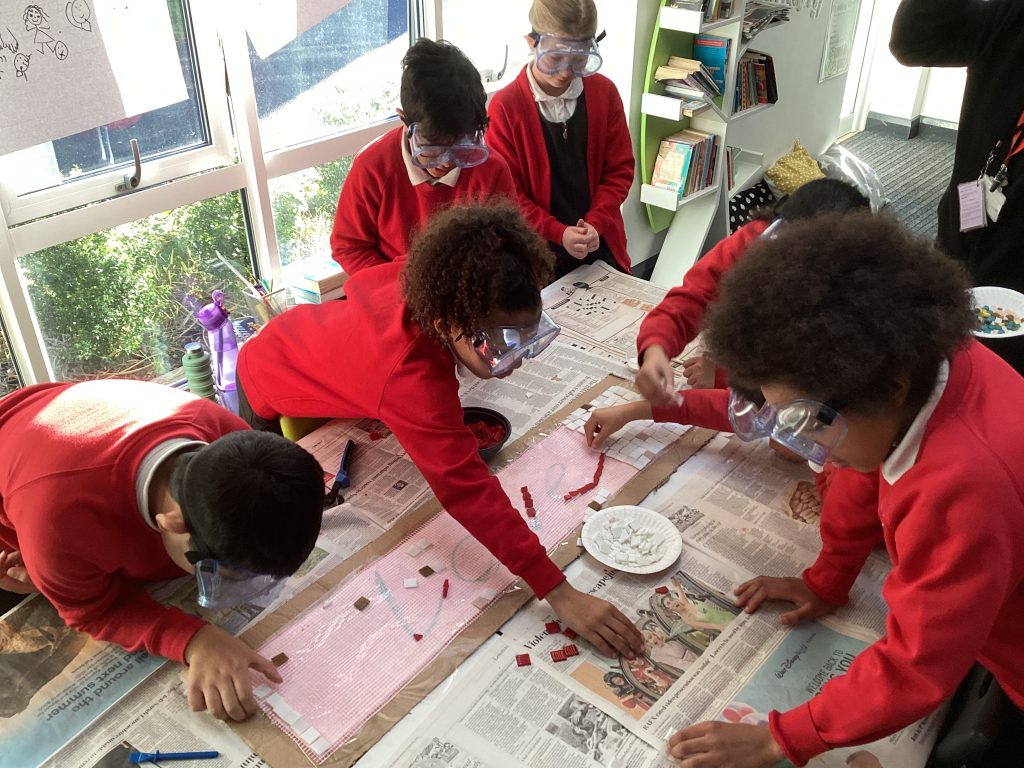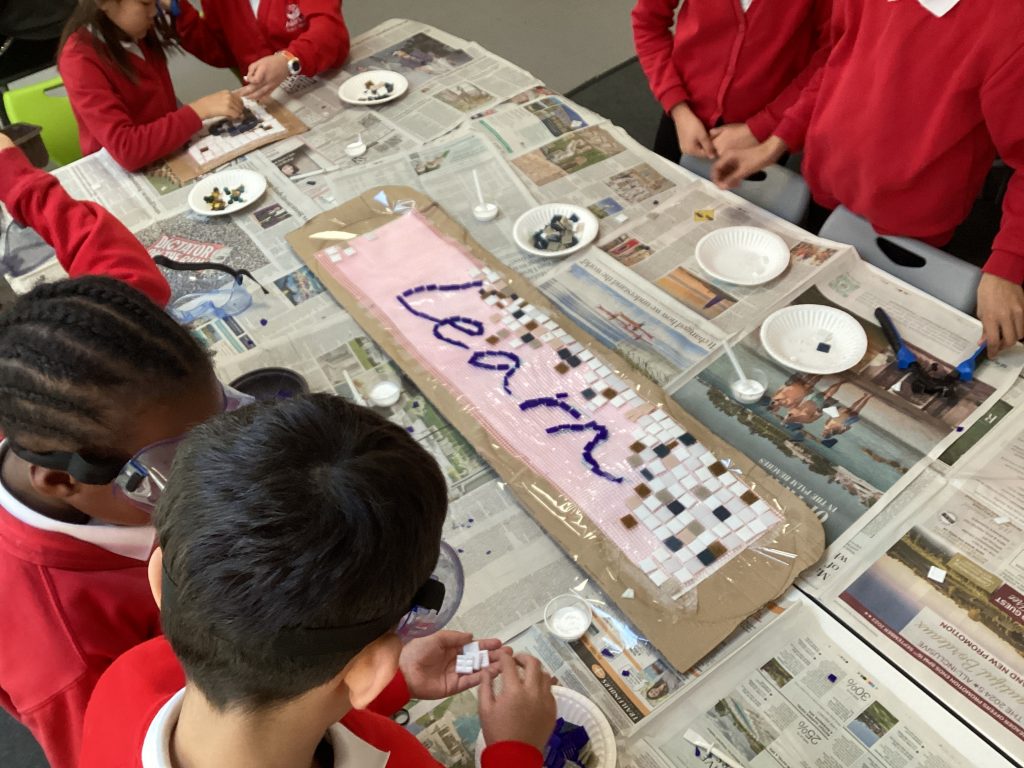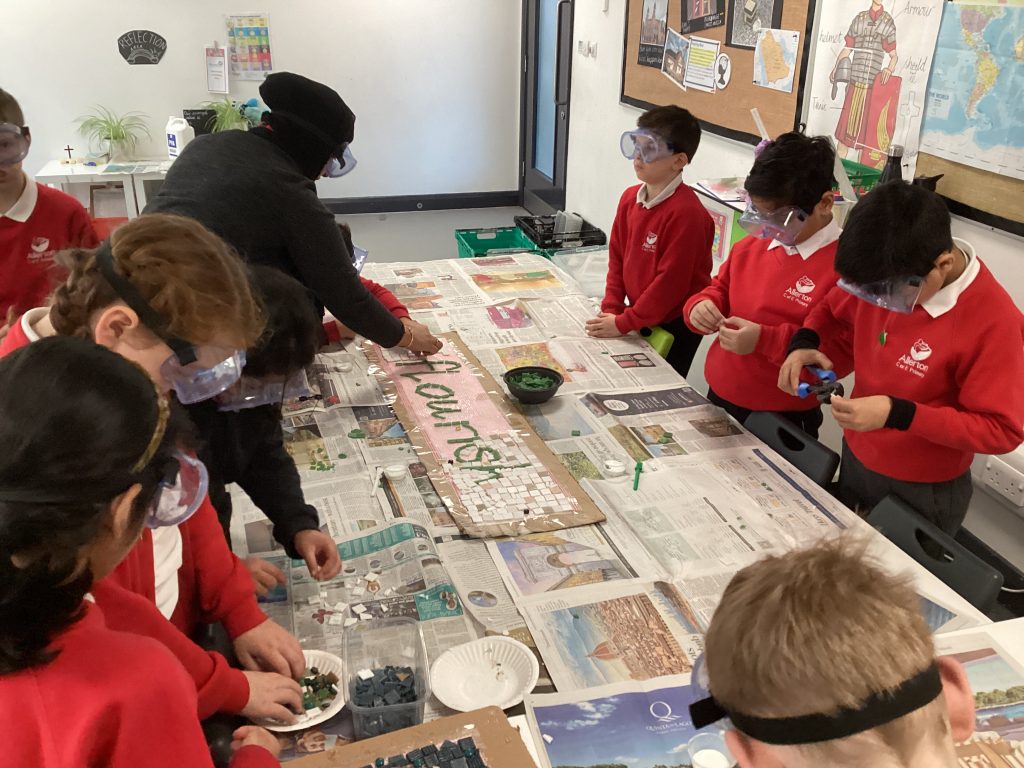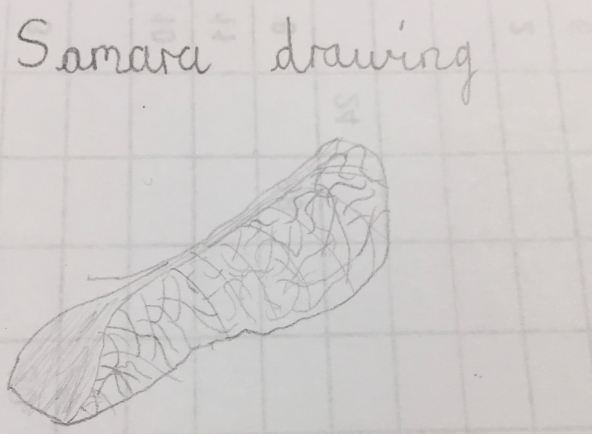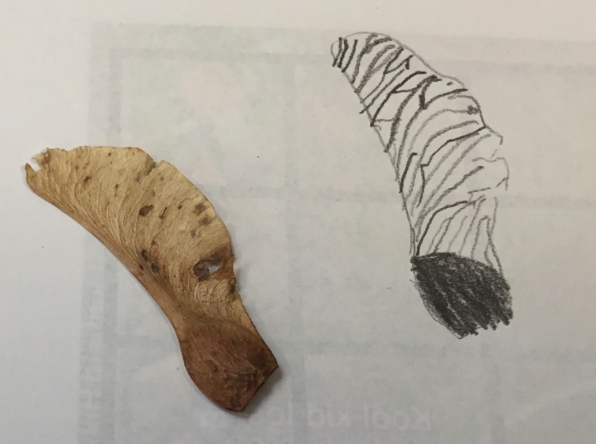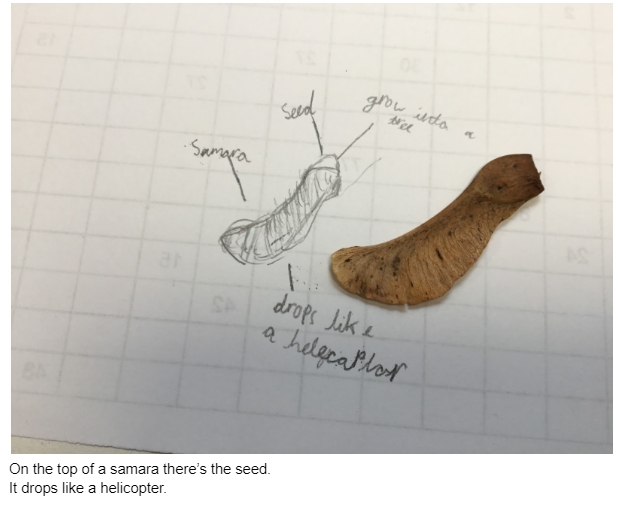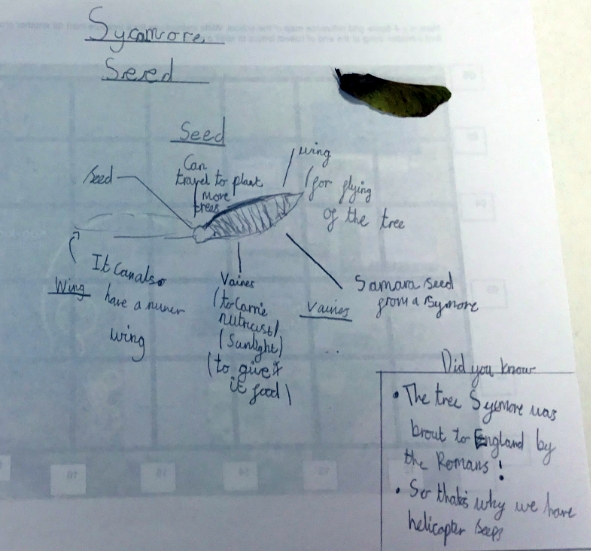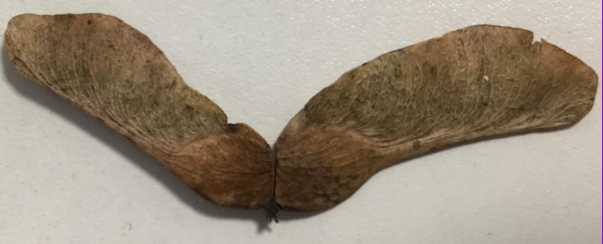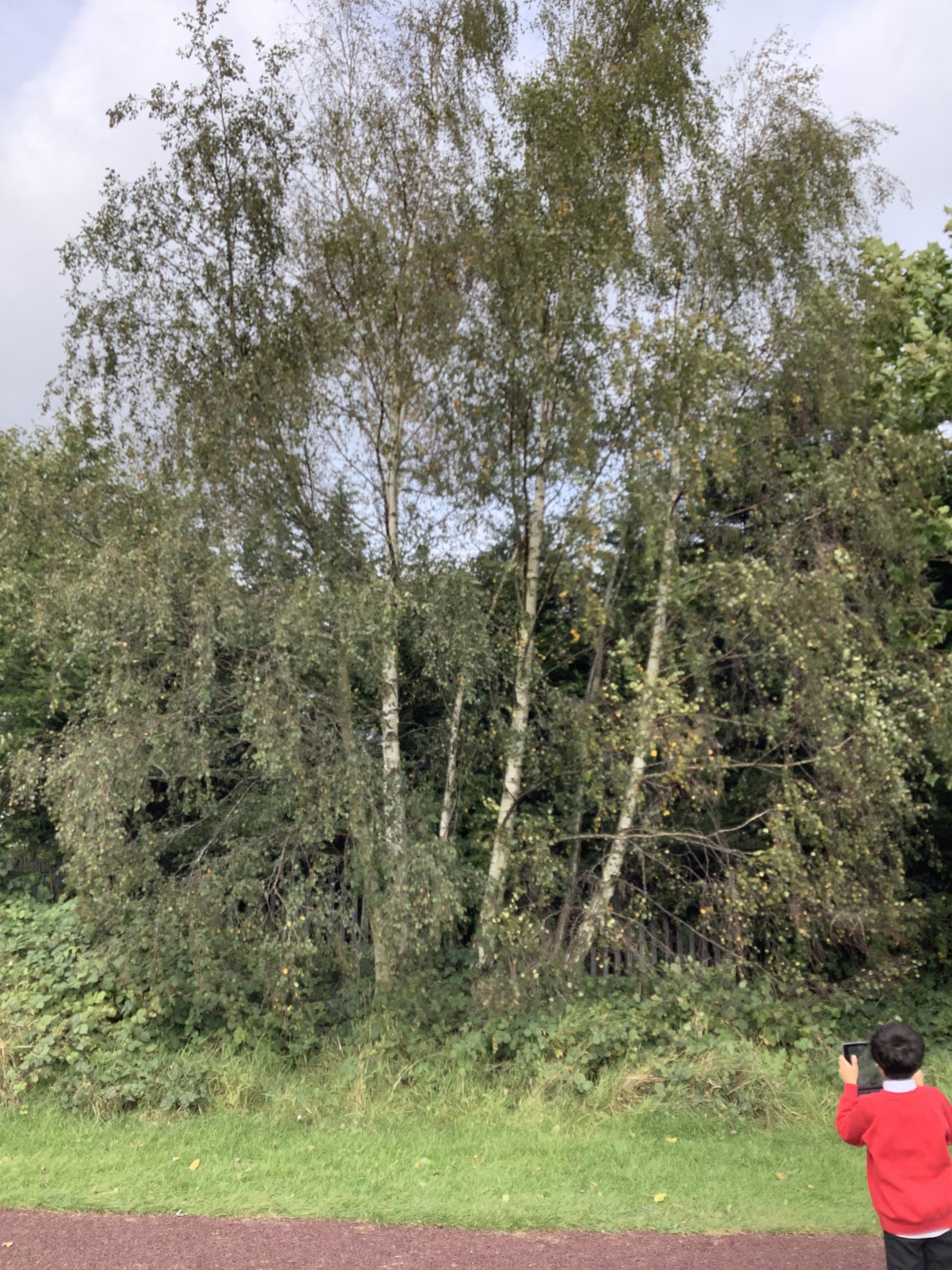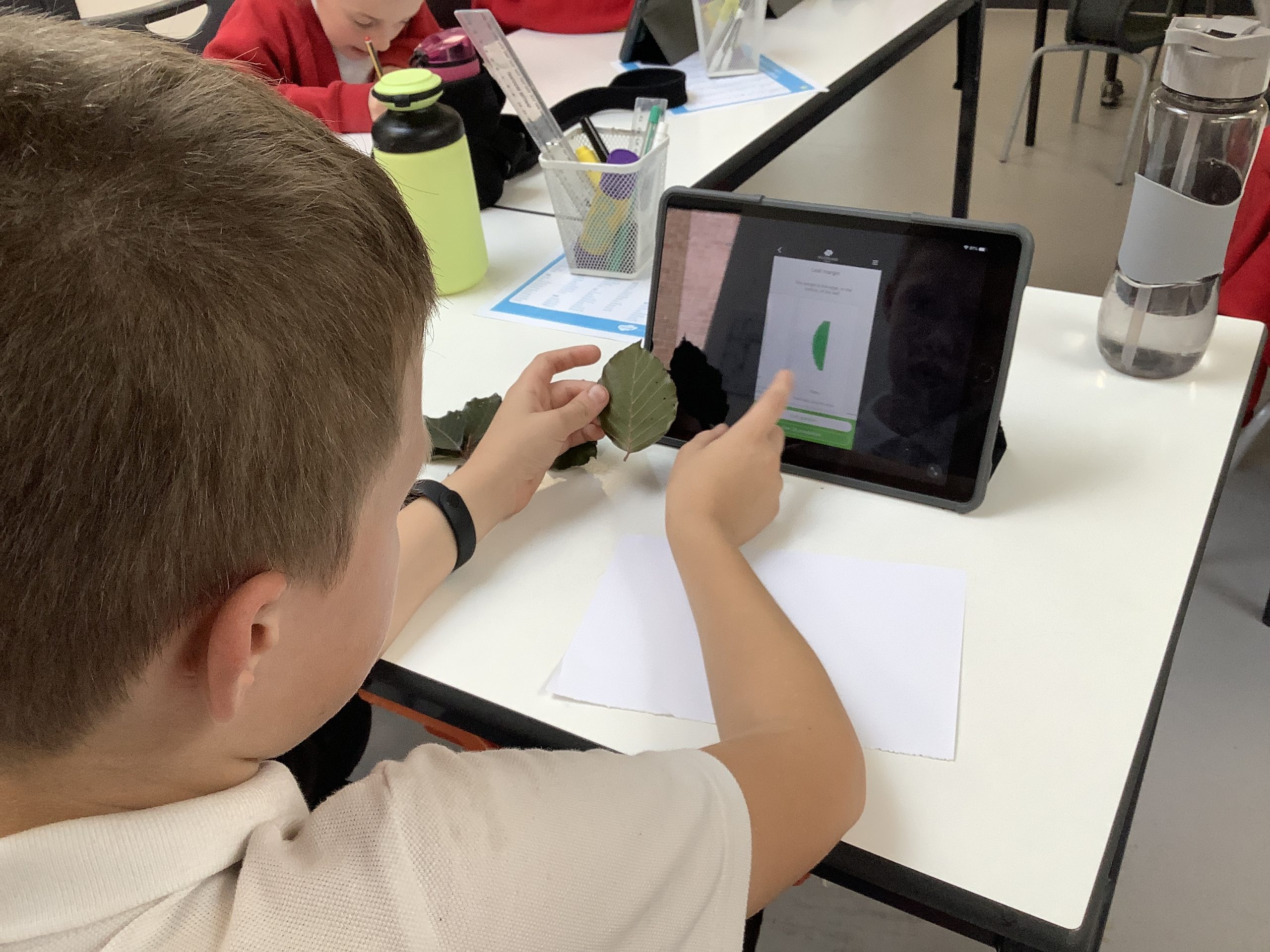We have been learning about factors and factor pairs this week and have been practising physically modelling factors …on the floor!
Roman Mosaics
Today was mosaic day and we started out by arranging our mosaics and learning how to snip them into shape. We then reflected on how we could make them clearer and how we would go about gluing the shapes. We were really happy with the final results!
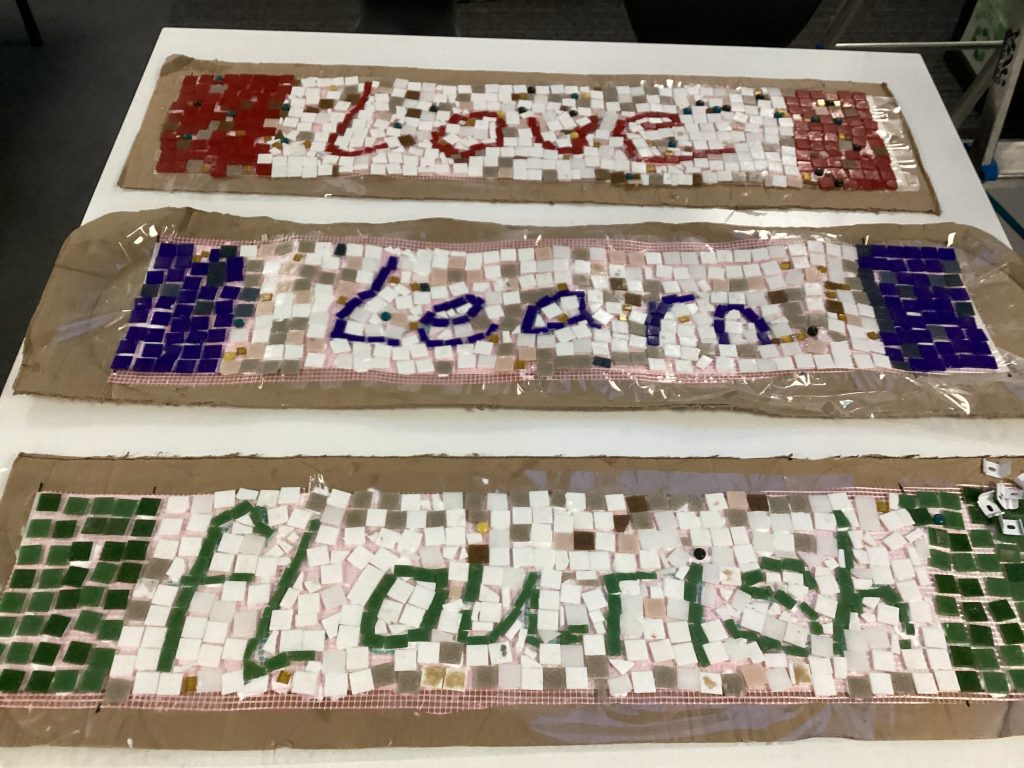
Gestural drawings of Romans
We have been learning the skill of gestural drawings in Art- where the key is to use large, long strokes to make it look like there is movement. We found it a bit tricky to start with as normally we want to make our work look as neat as possible but actually with gestural drawings we learned they look best if they are done in a more sketchy way!
Day 1 practising….
Day 2 large ‘tapestry-like’ sketching
Folk musicians with Y4
On Wednesday we had a group of Folk musicians visit Year 4 for a workshop. They introduced us to lots of new instruments and we got to take part in a lot of old Folk songs! Can you remember any of the instruments/ words?
Trip to the Thackray Museum of Medicine
We had an trip this week to the Thackray Museum of Medicine. We started off by exploring ‘disease street’ and looking at what health was like in Victorian Leeds. We thought about how it might make our stomachs feel if we ate the pies that were made on the side of the toilet block and also looked at the ‘germ room’.
In the afternoon, we had our ‘Say Aah’ workshop where the children simulated eating a banana sandwich. From the chewing to adding in salive and stomach acid, they helped the banana sandwich make it to the stomach and be in a good enough state for the body to absorb the nutrients.
We then looked at the importance of brushing teeth and looked at different herbivore, carnivore and omnivore’s teeth!

Do trees travel?
This week 4C asked the question “Do trees travel?“
To try and answer this question we looked at sycamore trees which were apparently introduced into this country by the Romans and now grow all the way across the UK. So perhaps our question was already answered?
The seeds on a sycamore tree are called samaras and we examined them carefully, taking photos and drawing them so that we could identify all their features. Here are some of our drawings and photos:
We also made a paper “helicopter” so that we could compare how well our samaras flew compared with our paper ones:

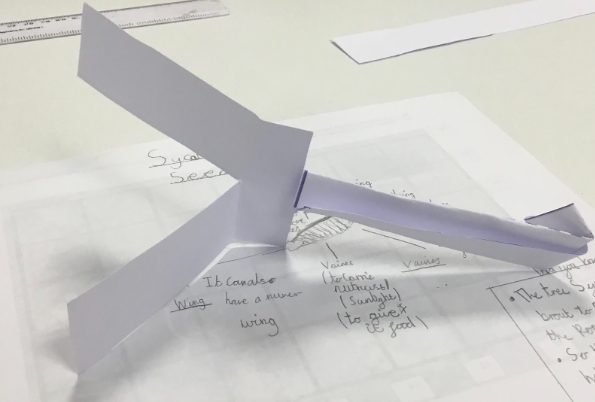
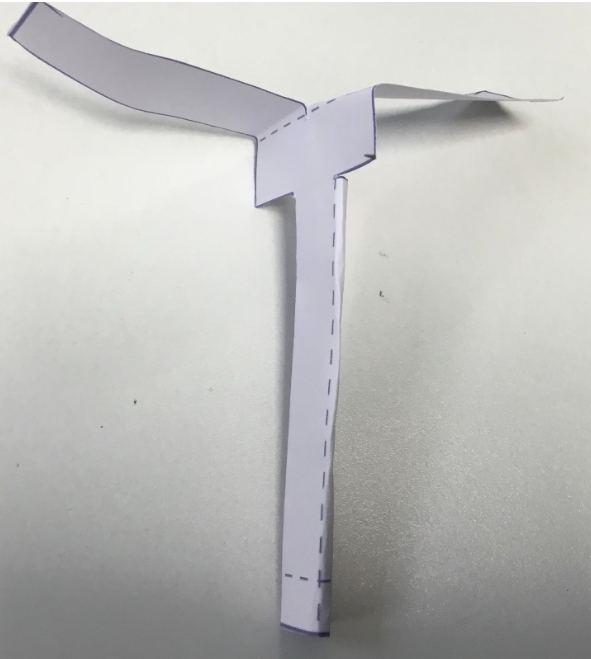
We then took our Samaras and helicopters outside and tried to film them as they fell, whirling through the air.
Our conclusion?
Trees do travel, but very slowly. A sycamore tree can produce huge numbers of seeds which can travel on the wind a reasonable distance from the parent tree but it then takes many years for that see to grow into a tree which can produce more seeds to travel the next section of their journey. In this way, trees have moved north and south with the Ice Ages have changed the climate over thousands of years. Climate change caused by humans may be too rapid for a lot of trees so we may need to give them a helping hand …. just like the Romans did with the sycamores!
Exploring Trees
For the past few weeks 4C have been exploring trees on a Wednesday afternoon. We have had a look at some of the different trees around the school grounds, collected some leaves and tried to identify some of them using the Woodland Trust app. At this time of year we can identify trees using their leaves or their fruit or seeds.
Trees are incredibly important in our environment and we need to protect the ones we have and grow as many more as we can. If you want to know more about working with trees and what is happening in Leeds about tree planting then there is an event on Friday 10 November.
Alwoodley2030 also have lots of events being planned, some of which involve caring for or planting trees.
Saturnalia with Matthew Bellwood!
What a morning we had to kick off our Monday! Matthew Bellwood was back and had us all dressed up like Romans to celebrate the festival of Saturnalia (festival Romans had to celebrate Saturn). We started off exploring the markets and what the Romans would have sold- oysters, olives and even fish oil! The patricians who ran the government were wearing their togas looking down at the plebs in the market and even the slaves had the day off.
In part 2, we went to the Roman temple and explored the different gods that the Romans had, from Jupiter (god of the gods) to Minerva (goddess of wisdom). We learned that during the festival of Saturnalia, people would have made a sacrifice to the gods. Which Roman gods can you remember?
In the final part of our workshop, we learned about the gladiator fights that people would have watched during the festival and what types of different gladiator fights there were. The patricians were able to decide if the gladiators life was spared by putting their thumbs up or down!







Roman shields
This week we have designed and made our very own Roman Shields. We looked at the feathered designs and how most of the Roman shields were the same. We then stuck on our relief and painted our designs resulting in brilliant Roman style designs.





















Beats, bones and bodies
We have been learning about the digestive system with Miss Tricia and have been building on our dance skills at the same time. With scarves representing nutrients, we have been learning about how the digestive system from start to end and the different muscles and organs needed. Can you remember how many seconds it takes food to travel down the oesophagus?










